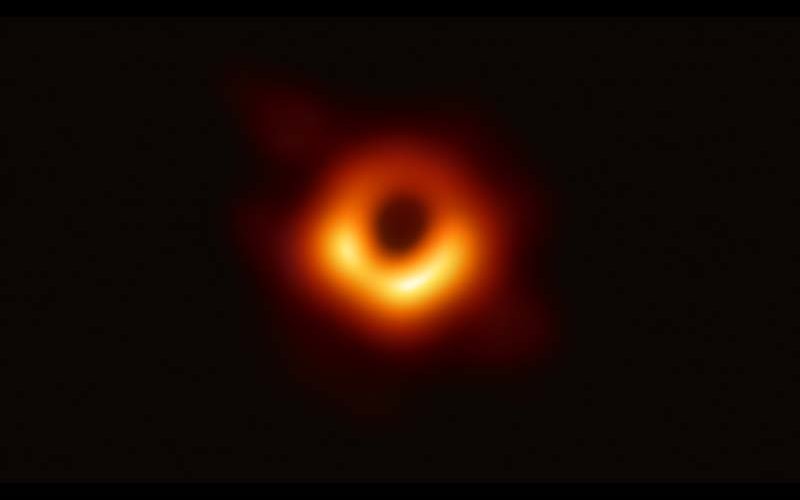
Captivated by the cosmos and “cool” black holes since childhood, Cal State Fullerton physicist Geoffrey Lovelace has imagined the day he would actually see a black hole in space. Then it happened. A team of astronomers captured the first-ever photograph of a black hole, in a far distant galaxy called M87, announced April 10.
“I’ve been waiting for years to see a black hole, and the day finally came,” said Lovelace, whose research focuses on using high-power computer simulations to model sources of gravitational waves, such as colliding black holes. “I was awestruck seeing that beautiful image. I was especially excited to see that the image agreed with Einstein’s theory of relativity, even though it had never been tested under these extreme conditions before.”
The science breakthrough was a culmination of work by more than 200 researchers of the Event Horizon Telescope Collaboration: “I congratulate them for this spectacular result,” Lovelace said.
Lovelace is a member of CSUF’s gravitational-wave faculty-student research team, which also includes Jocelyn Read, an astrophysicist, and Joshua Smith, Dan Black Director of Gravitational-Wave Physics and Astronomy. The researchers and their students played a key role in the first discovery of gravitational waves in 2015 from the merger of two black holes that produced a single, more massive spinning black hole, as well as subsequent detections announced in 2016 and 2017 from merging black holes. The detections were made by the twin Laser Interferometer Gravitational-wave Observatory (LIGO) detectors, located in Livingston, Louisiana, and Hanford, Washington, and by the Virgo detector near Pisa, Italy.
What does this breakthrough mean for gravitational-wave astronomy?
The image gives astronomers a new tool to directly see and understand the supermassive black holes at the centers of galaxies. These black holes are small compared to a galaxy, with the black hole in the image about the size of our solar system. But black holes have huge influence in creating vast structures, like large jets of matter that can be many light-years long.
Why is this an important milestone?
The image is already teaching astronomers new things, like the mass of the black hole at the center of the galaxy Messier 87. Astronomers have two different ways of measuring the black hole’s mass. The size of the black hole’s shadow tells you what he answer is: the bigger the shadow, the bigger the mass. Knowing the true answer helps astronomers improve how they measure the masses of supermassive black holes, and also understand the huge influence black holes have on the galaxies and the space around them.
What are you most excited about in having visual evidence of a black hole?
I’m looking forward to seeing how supermassive black holes like the one in the Event Horizon Telescope’s image interact, merge and emit gravitational waves! But detectors on Earth can’t see those waves because ground vibrations overwhelm them. We’ll have to wait until the 2030s, when the Laser Interferometer Space Antenna (LISA) is scheduled to begin observing gravitational waves.
How does this breakthrough inform your work in gravitational-wave research?
This image gives us the first-ever direct evidence that supermassive black holes are described by Einstein’s equations of relativity. This is very encouraging because we expect to see black holes like this merge with LISA. So, we can solve the same equations as we do now, modeling smaller black hole mergers for LIGO. We’ll just need to learn how to do this much more accurately, because the waves from merging supermassive black holes will be so much louder than the ones LIGO is seeing today. This is something my students and I are working on now as we help to build the next generation’s software for simulating colliding black holes.